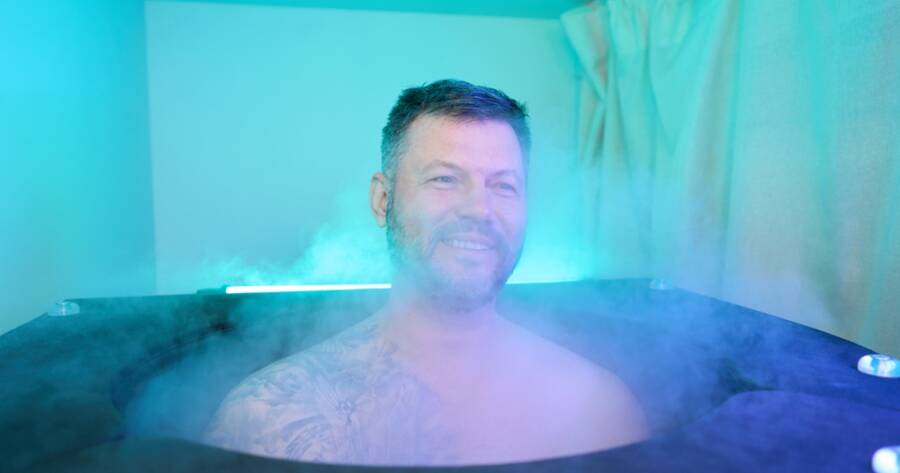Tucked among Europe’s highest peaks, the Alps have become an unexpected hotspot for the latest in human performance. Here, altitude isn’t just a scenic feature — it’s a catalyst for change. Biohackers are tapping into the unique environmental stressors of mountain life to improve vitality, focus, and resilience. From hypoxic training to light therapy, high-altitude techniques are offering a science-backed path to better energy and recovery.
What Is Biohacking — and Why the Alps?
Biohacking is the art and science of making small, measurable changes to your body to boost performance and well-being. This might include tracking sleep, using cold exposure, adjusting nutrition, or tapping into light therapy. While the term may sound futuristic, it often involves natural methods made more effective with the help of modern science.
The Alps offer the perfect setting for biohacking. Clean mountain air, cold streams, and low light pollution naturally support some of the most effective health-boosting techniques. The altitude itself is also a factor: higher elevations can increase red blood cell production, improve oxygen efficiency, and even help regulate stress hormones.
This combination of nature and innovation is exactly what makes Alpine retreats ideal for people who want to feel their best — whether recovering from burnout, improving physical health, or simply gaining clarity in a quiet, high-altitude environment.
1. High-Altitude Oxygen Training for Endurance and Recovery
Many Alpine retreats are now offering intermittent hypoxic training, a method where guests breathe low-oxygen air in short sessions to mimic the effects of high-altitude workouts. This stimulates the body to adapt — increasing stamina, oxygen use, and overall resilience.
At these centers, guests often begin with baseline testing, followed by guided sessions using specialized masks or altitude chambers. The result is a boost in cardiovascular health and endurance — without needing to run uphill.
Oxygen training is particularly useful for athletes, but also benefits anyone looking to sharpen mental focus or recover from fatigue. The body learns to work more efficiently, and many people report feeling energized and more alert after just a few sessions.
2. Cold Exposure and Cryotherapy for Muscle Repair
The Alps are a natural home for cold therapy, thanks to their icy rivers and snow-fed lakes. Many wellness retreats have embraced cold immersion and cryotherapy as essential parts of their recovery programs.
Guests might start their day with a plunge in a glacier-fed pool or take part in structured cold exposure sessions combined with breathwork. Others may choose whole-body cryotherapy chambers, where ultra-cold air is used to quickly reduce inflammation and support joint health.
These treatments are known to stimulate circulation, speed up muscle repair, and help the body manage stress better. Cold exposure also activates brown fat — a special type of fat that helps regulate body temperature and energy use.
3. Personalized Nutrition Based on Bloodwork
One of the most effective biohacking methods is tailored nutrition — not just based on food preferences, but guided by real data. Some Alpine retreats offer in-depth blood testing and metabolic screening to build a personalized food plan.
These plans focus on balancing blood sugar, reducing inflammation, and supporting gut health — key pillars of energy and vitality. Guests are often surprised to find that minor adjustments, like shifting mealtimes or cutting out specific ingredients, can lead to major improvements in mood, focus, and digestion.
Meals are usually prepared with local, organic ingredients, and often paired with supplements based on the body’s specific needs. The combination of altitude, movement, and personalized meals creates a powerful reset for the digestive system and beyond.
4. Light Therapy and Sleep Optimization
Sleep plays a central role in recovery, and some Alpine retreats now specialize in circadian rhythm regulation — using light therapy and environmental design to reset internal body clocks.
At higher elevations, natural sunlight is more intense, making it easier to synchronize the body’s sleep-wake cycle. In addition to guided exposure to morning light, retreats may use low-blue evening lighting, soundproof rooms, and sleep trackers to help guests get the deepest rest possible.
Some programs also include brainwave analysis or heart rate variability monitoring to measure the quality of sleep and suggest changes that improve recovery overnight. The result is better rest, improved mood, and a more balanced nervous system — all essential for long-term vitality.
Nature Meets Science in the Peaks
Biohacking in the Alps is more than a health trend — it’s a thoughtful approach to wellness that blends ancient wisdom with modern tools. By combining clean air, high-altitude benefits, and science-backed therapies, these retreats help people reconnect with their bodies and rebuild energy from the inside out.
Whether you’re an athlete looking to boost performance or simply someone seeking a break from digital fatigue, the Alpine biohacking experience offers a way forward: calm, customized, and grounded in both nature and knowledge. As these retreats continue to grow across the EU, more people are discovering that the path to vitality may just begin above the clouds.

